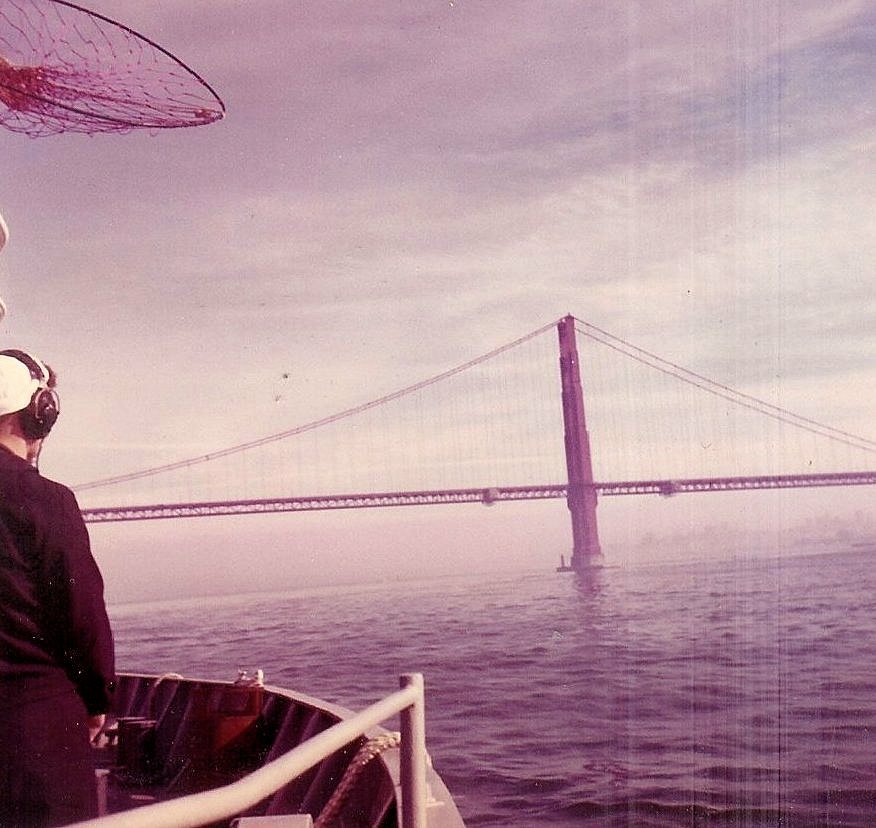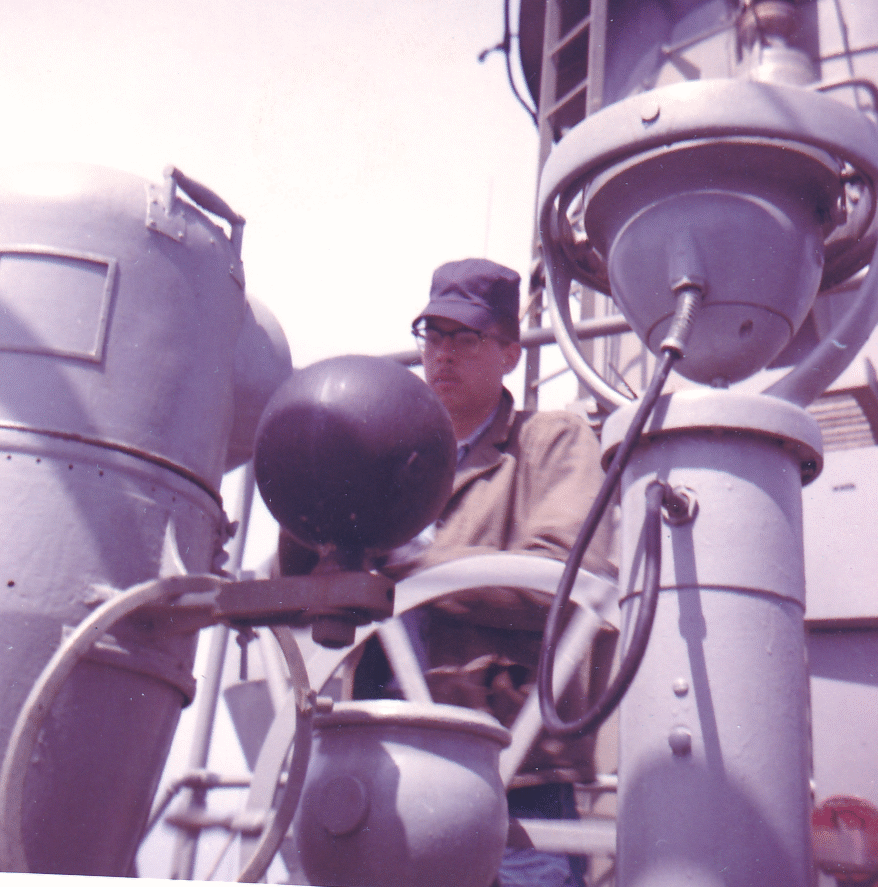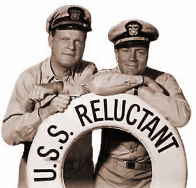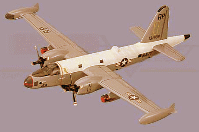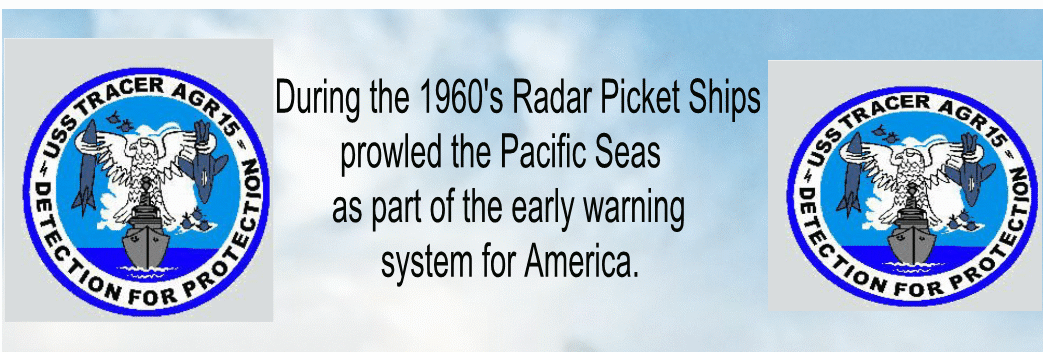MORE CREW PHOTOS:
On the left is a photo of three sailors from the Deck Division standing back against the bulkhead behind Gun Mount 32 on the fantail of the ship. The sailors are---from left to right---Ray Chapman, Seaman, Al Gracinette, Seaman and Roland Phillips, who was a Seaman at the time. The photo was taken early in 1963. Gracinette went on to become a Radarman striker(RD) and worked in CIC (Command Information Center) while Chapman stayed in the Deck Division and Phillips went on to be promoted to Gunners mate third-class.
The second photo is of Ray Chapman on the flying bridge (the following year) this was obviously taken on a southerly station because the weather is so good and the sea is clam. On some days the sea could be as still as glass
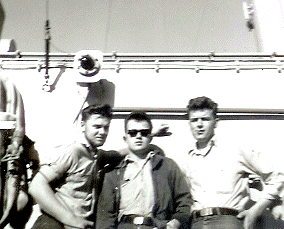
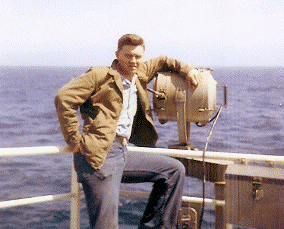
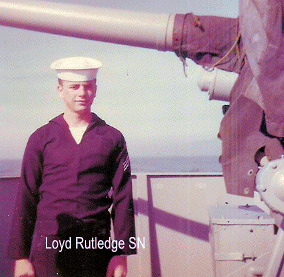
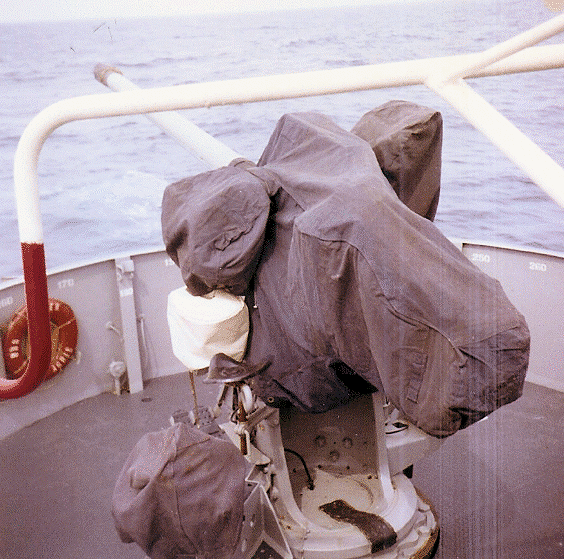
The two photos below are of the USS Tracer underway. On the left you can clearly see the radar arrays and the starboard-side whaleboat hanging in its divots. You can see a portion of the flying bridge with a signal lamp clearly visible. The square area in the background, above the fantail, is an area called Secondary Steering. In other words there was a helm there and an engine-order-telegraph all for the purpose of steering the ship if the bridge were taken out of commission. The watch could be ordered to Secondary Steering and the ship maneuvered from there if necessary. As a matter of fact the helm rudder-mechanism was located two levels beneath Secondary Steering and the ship could be steered manually below decks by manipulating the rudder-mechanism if absolutely necessary. The first photo shows the starboard side of the ship. The other photo is of the port-side of the ship. Again you can see the radar arrays that gave the Tracer her purpose in life. Also, you can see the flying bridge area and two portholes that were windows for officer’s staterooms. Also you can see the whaleboat on the port-side. The canvas-covered items just forward of the whaleboat are life rafts
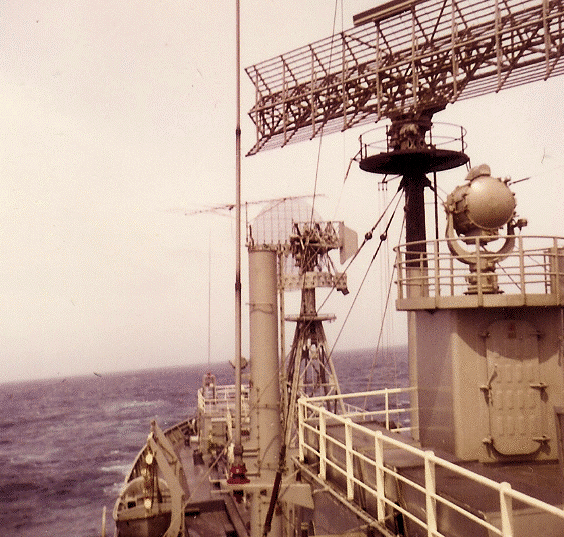
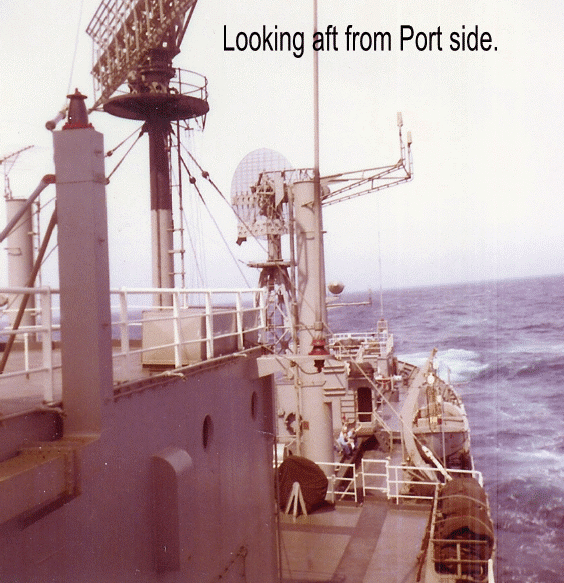
The two photos below show (on the left) the Tracer returning to San Francisco and (on the right) a sailor actually steering the ship from the Flying Bridge. The photo of the USS Tracer returning to port was taken in early 1964; the Golden Gate Bridge is visible in the foreground. The Tracer went under the Golden Gate many times in her saltwater career and those of us who served aboard the Tracer looked up at the bottom of the Golden Gate Bridge many times. Above the sailor’s head (the sailor in the photo) is the fishing net that was used to grab Japanese fishing balls drifting on the sea while the Tracer was on Northern stations. The sailor with the earphones on is at his post when the Tracer is coming into port. He is standing just outside the ship-fitters shop and above him is the Secondary Steering platform. The photo on the right is of a sailor at the helm; actually at the helm while the ship is on station somewhere in the Pacific. The weather was beautiful that day and the Captain had transferred the watch from the Pilothouse up to the Flying Bridge. The sailor is manipulating the helm while looking at a compass and maintaining a course that has been ordered by the Officer of the Deck. Nearby is an engine-order-telegraph, which the helmsman could use to order the engine room to slow down or speed up when he himself is ordered to do so by the OD.
